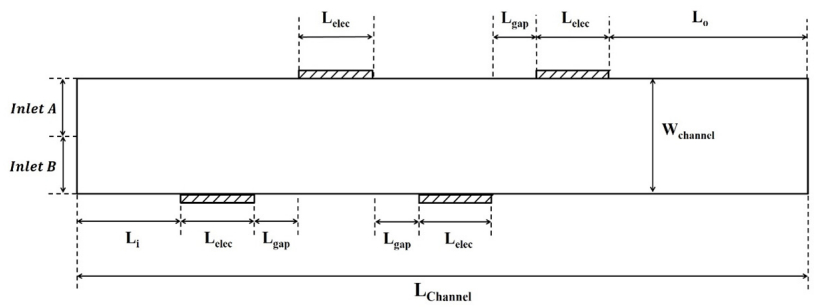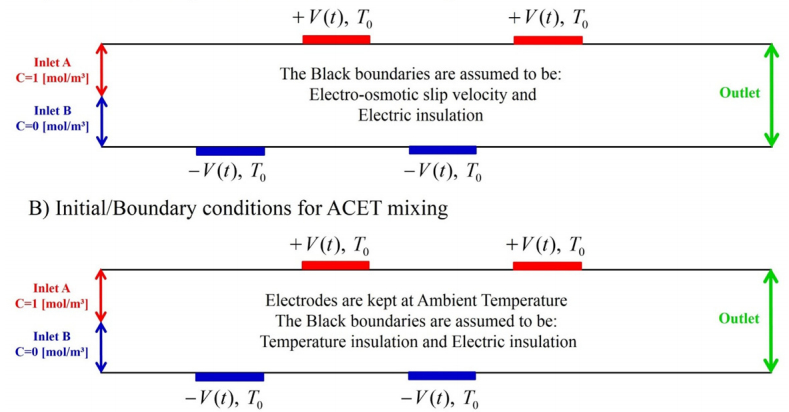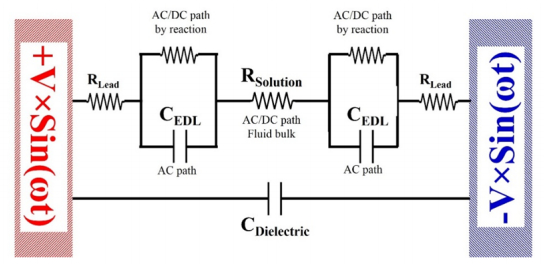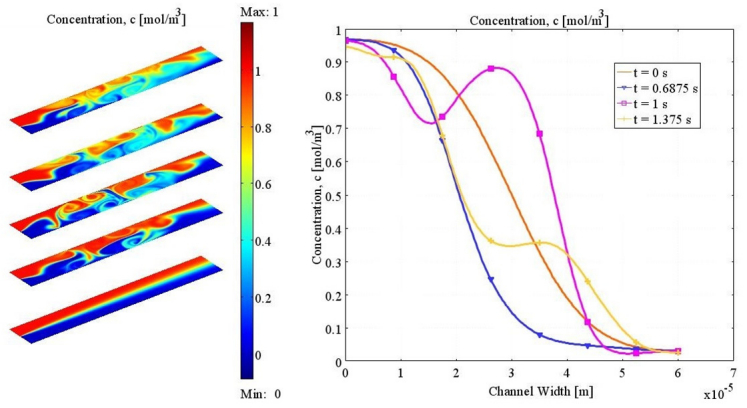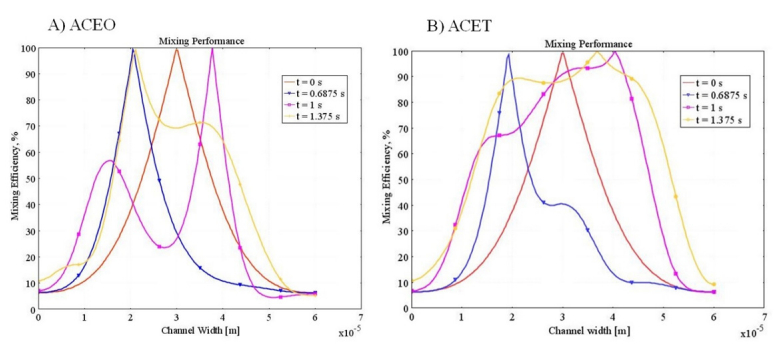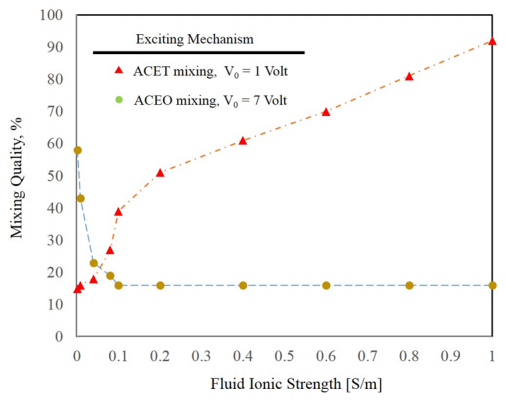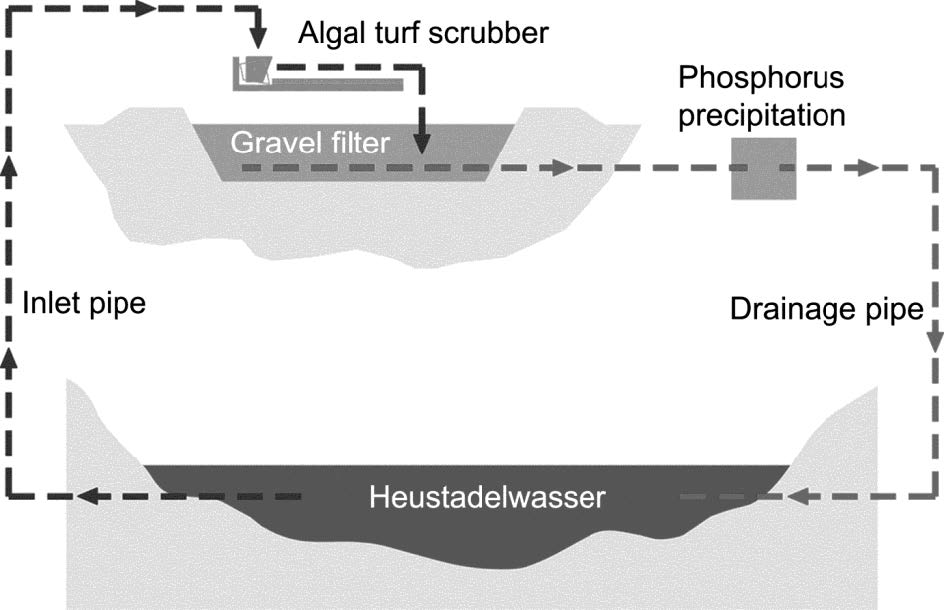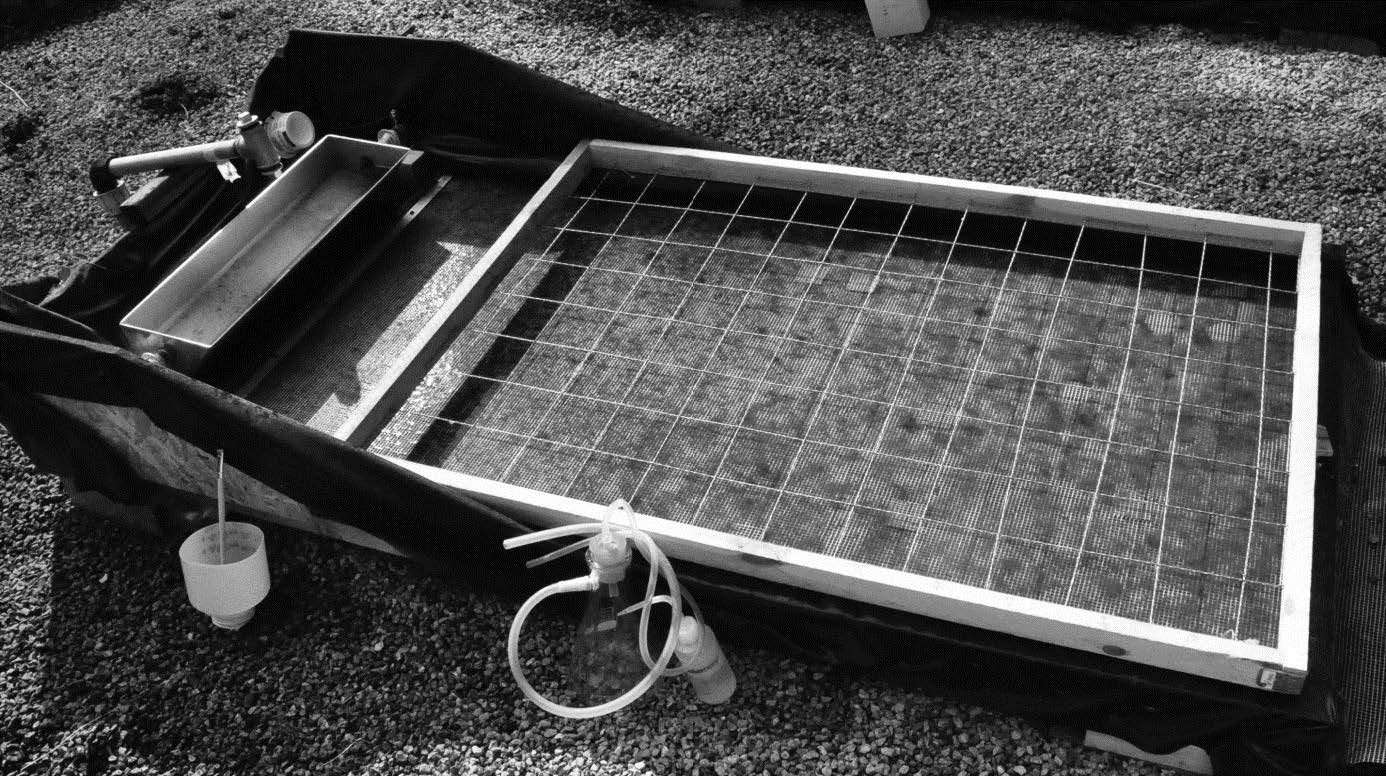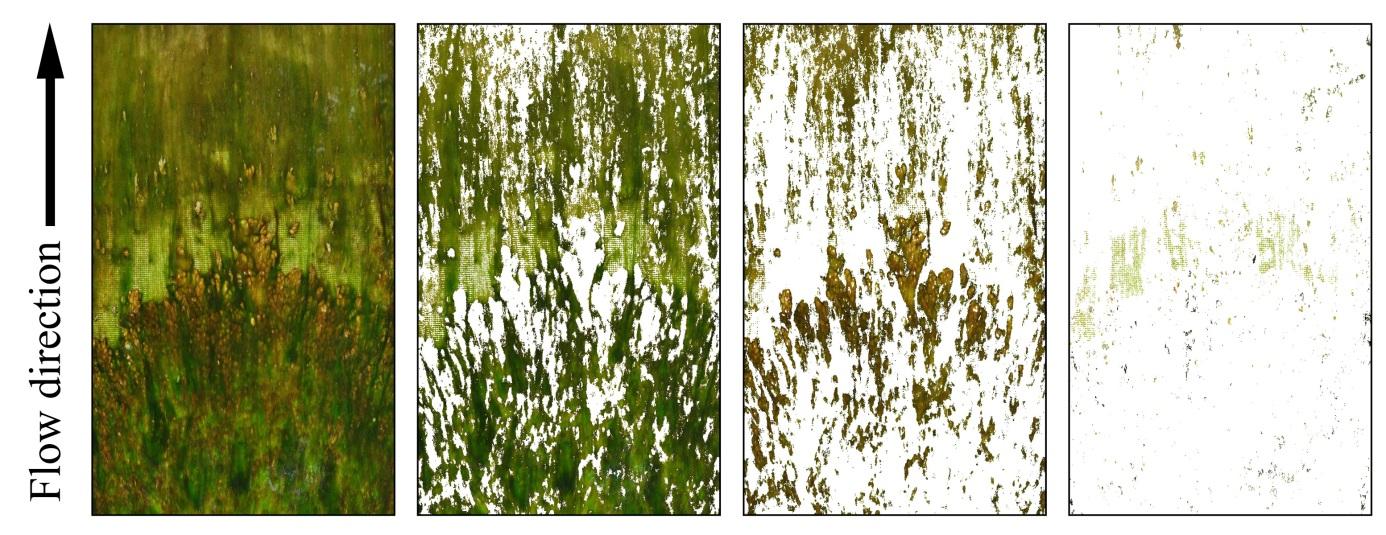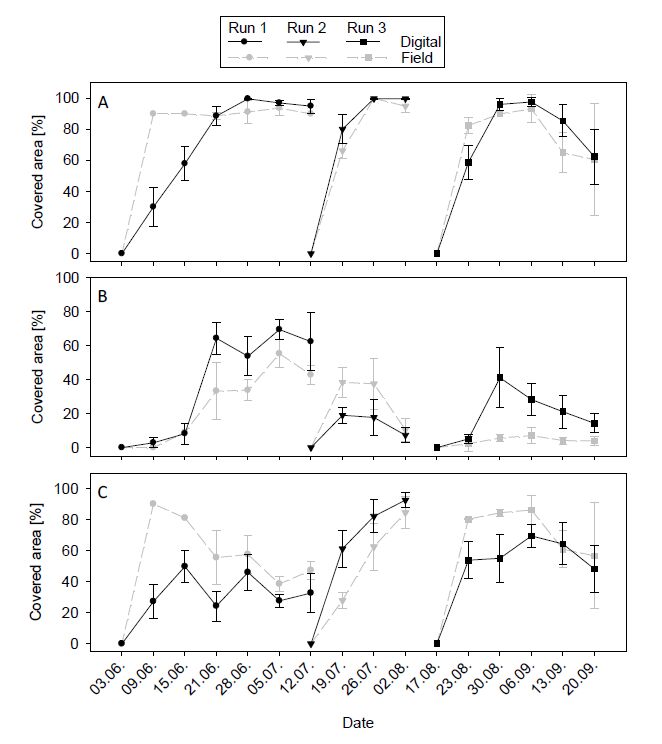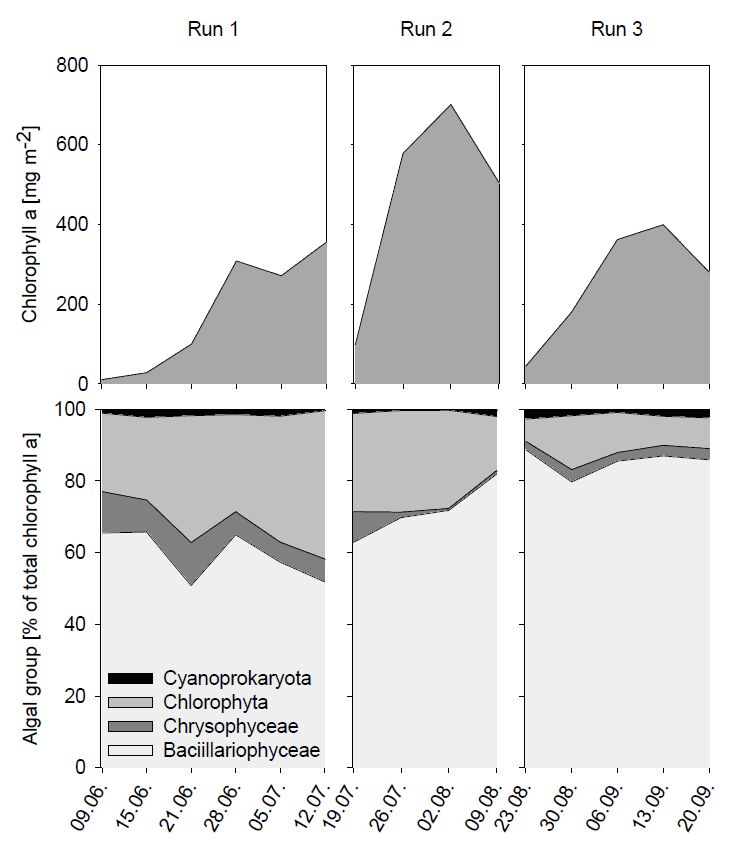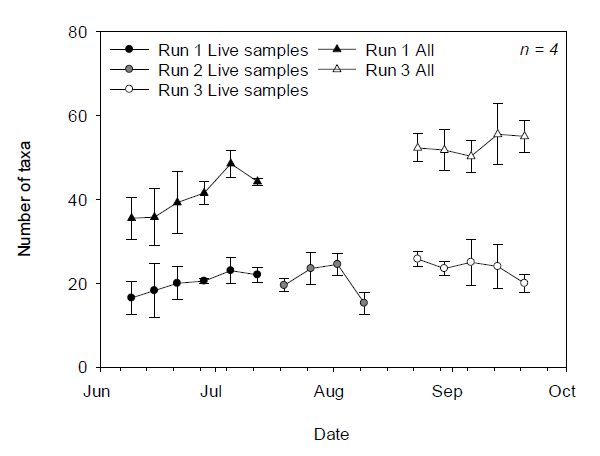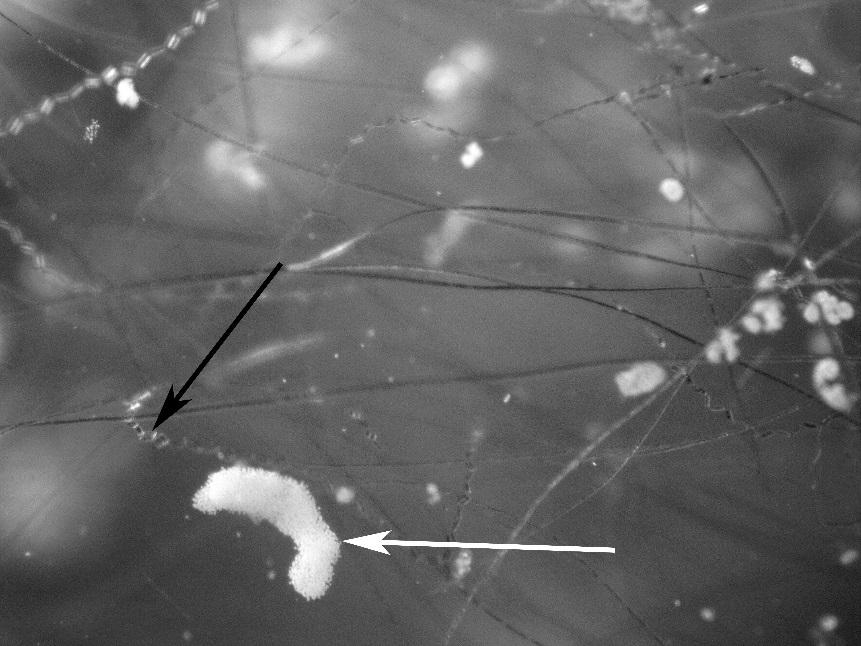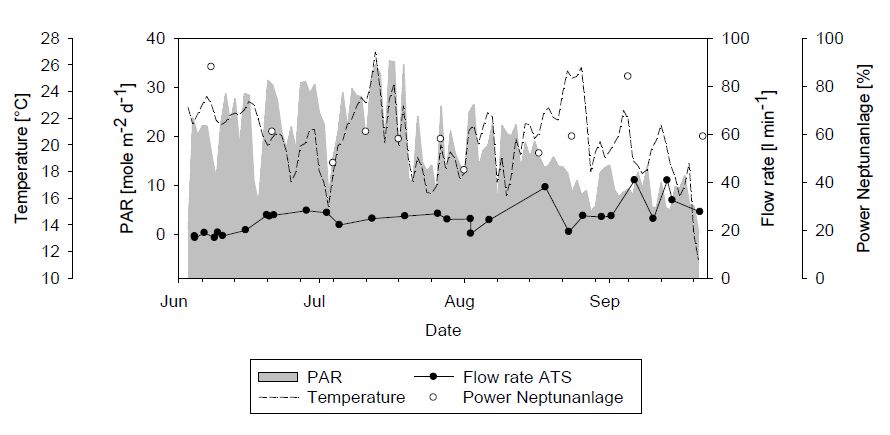1. Introduction
The successful progress displayed in microelectronic industry has motivated the researchers in wide variety of fields to employ the concept of integration into fluid mechanics [1] and biological engineering [2,3,4] with the hope of cost-effectiveness and high performance enhancement. The low velocity and small scales cause very low Reynolds number fluid. Micro-scale disturbance and mixing process are highly challengeable issues in preparation step for bioprocess and Lab-on-a-Chip (LOC) analysis. Due to very low Reynolds number in microscale, the mixing effect is completely troublesome [5] (equation (1)).
Where, ρ is the fluid density, u is the velocity vector, μ is the fluid dynamic viscosity and l is the characteristic length of microchannel. The viscose effect is dominant factor in micro-devices (Re < 1) and molecular diffusion is the main transport phenomena for mixing [5]. Rapid micromixing can be classified into passive and active micromixers [5]. The passive types enhance the fluids mixing effect by utilizing asymmetric channel geometry like serial lamination [6] and Zigzag shaped mixer [7]. In contrast to passive types, active micromixers increase the interfacial area between the fluids by using an external force such as magnetic [8], ultrasonic [9], and thermal [10] forces.
In past two decades, electrokinetic mechanism has been employed to mix fluids in microchannels. AC electroosmotic (ACEO) flow is more efficient for generating distribution effects. If a tangential electric field is applied to a fluid medium, the charges in the Electrical Double Layer (EDL) between the surface and the fluid, experience a significant force. EDL charges' movement pulls the fluid along the channeland generates ACEO flow [11]. Biddiss and et al. declared that applying a time-varying periodic electric field to the electrodes generates a chaotic regime and enhances mixing performance [12]. Electrokineticly driven (100 V/cm, 2 Hz) mixing effect was achieved by using a switched DC field to induce instability effects inside a microchannel [13]. A time-dependent external electric field is applied to generate secondary flows around internal obstacles in a microchannel [14]. Chen and Cho [15] designed a micromixer by employing chaotic regime. The oscillating electric potentials were derived by using a Duffing-Holmes chaos system. Vafaie et al. [4] presented a high throughput AC electroosmotically driven micromixer. The electrodes were covered by a thin insulator material in order to eliminate electrode degradation and unwanted electrochemical effects.
AC electroosmotic mechanism relies on the formation of EDL and thickness of EDL is dramatically related to the electrical conductivity of fluid mediums. It should be noted that high ionic strength buffers and solutions are very conventional in biological and immunoassay applications [16,17]. Therefore, EDL layer collapses in high conductive mediums and the electroosmotic flow loses its efficiency [18]. In contrast to ACEO, the AC Electrothermal (ACET) flow is remarkably efficient for high ionic strength fluids [19]. ACET flow was investigated to improve the binding efficiency of on-chip immunoassay biosensors [18]. ACET mechanism was also studied as an accompanying phenomenon in Di-electrophoresis particle manipulation [20]. AC field electrodes and DC-heating element were arranged as a method for ACET micro-pumping [21]. Most recently, Vafaie et al. [2] have experimentally investigated the ACET mechanism for bi-directional pumping of high conductive solutions. Vafaie and Ghavifekr [22] have presented a novel electrode engineering array for on-chip fluid manipulation by using ACET flow.
In this research, AC electroosmotic and AC electrothermal mixing process are investigated for wide range of ionic strength fluids which can be very helpful for in situ applications. The ACEO flows are employed to the electrode structures to enhance the mixing effect in low ionic strength and also ACET flows are applied to the same electrodes in order to mix high ionic strength mediums. A set of numerical studies is run to investigate the multi-physic ACEO and ACET flow effect on mixing efficiency.
2. Materials and Method
By considering a pair of side by side electrodes and applying a time-dependent electric field to the electrodes, two important mechanisms can be occurred. When the frequencies of the applied electric field and the medium charging (τq–1 = σ/ε) are in the same range, the counter ions do not have enough time to completely screen the electrodes surface. A part of electric field is consumed for screening effect and the other part is dropped over the fluid medium (Figure 1A). The inner portions of EDL on the electrodes charge more rapidly than the outer portions. In this case the electrodes are partially screened and a tangential force causes to induce an ACEO flow from the screened portion towards the unscreened portion. It should be noted that the generated ACEO flow is independent of the sign of the applied electric potential. For very high actuation frequencies, there is not enough time for the ions to do screening effect and the entire electric field is dropped over the fluid medium (Figure 1B). This effect leads to locally temperature rise inside the channel. Based on Joule's law (W = σE2) the generated temperature increment is dependent on the fluid ionic strength [19].
2.1. Theory
The governing equations for the ACEO and ACET flows in order to mix wide range of ionic strength are described as follows:
2.1.1. AC Electroosmotic theory
According to ACEO physical equation, a multi-physics coupled problem should be analyzed which includes fluid mechanics, electric field and Convection-Diffusion theory. Incompressible Navier-Stokes equation (equation (2)) and continuity equation (equation (3)) solve the fluid motion inside the channel [23].
|
ρ[∂ˉu∂t+→u∇ˉu]+∇p−μ∇2→u=fBulk⏟ρe→E.
|
(2)
|
Where, p is the pressure in the micro channel, ρe is the electric charge density, and E is the generated electric field in micro channel.
A thin layer of EDL exists as the electrode-fluid medium interface, the characteristic thickness of electric double layer can be estimated by Debey length, λD:
Where, kb is the Boltzmann constant, T is temperature, ε is dielectric constant of fluid medium, ni0 is bulk concentration of ion i,
zi is the valance of ion i and e is initial charge. The electric double layer thickness at low conductive mediums is typically about 10 nm.
The interaction between electrical double layer (EDL) and excess ions results in the electrical driving force which can be expressed by equation (5):
Where V is the applied electric potential. In this case, the counter-ions in EDL experience a tangential force by imposing a time-varying electric field.
As a result, the charges' movement pulls the fluid inside the channel and generates a secondary flow. ACEO velocity (u) is approximated by Helmholtz-Smoluchowski equation (equation (6)) [24]. The effect of ACEO flow is considered as slip flow velocity at the edge of electric double layer. Therefore, the slip flow velocity boundary conditions can be considered by Incompressible Navier-Stokes for fluid motion inside the channel.
Where, ε0 is the dielectric permittivity of vacuum, εr is the relative permittivity of the fluid, ξ is the electrokinetic zeta potential.
2.1.2. AC Electrothermal theory
In this section, the governing physical equations of the ACET mixing are described. By dropping an electric field over the high ionic strength mediums, temperature increases and also temperature gradients field is generated inside the channel. The generated temperature rise can be estimated by heat balance equation [25]:
|
ρcpu.∇T+ρcp∂T∂t=k∇2T+σ|E|2
|
(7)
|
Where, T is the temperature, cp is the specific heat and k is the thermal conductivity of medium. Generated temperature gradients cause gradients in electric properties (σ as electric conductivity and ε as electric permittivity). For an aqueous solution, equations (8) and (9) can be employed to demonstrate the temperature dependencies of σ and ε
[26].
|
σ(T)=σ(T0)(1+β(T−T0)),β=1σ(T0)(∂σ∂T)|T0=2%/K
|
(8)
|
|
ε(T)=ε(T0)(1+α(T−T0)),α=1ε(T0)(∂ε∂T)|T0=−0.4%/K
|
(9)
|
Where, T0 is ambient temperature and the time-averaged ACET force per unit volume can be written as [27]:
|
<FET>=12.ε(α−β)1+(2πfε/σ)2(∇T.E)E−14εα|E|2∇Tα=(∂ε/∂T)/ε;β=(∂σ/∂T)/σforaqueoussolution:<FACET>=−0.012∇T.ε|E|21+(ωτ)2⏟ColombicForce+0.001∇T.ε|E|2⏟DielectricForce
|
(10)
|
Where, ω = 2πfc is the angular frequency of AC electric field and τ = ε(T0)/σ(T0) is the charge relaxation time of medium. When ωτ ≪ 1, the columbic force is dominant to the dielectric force. However, for ωτ ≫ 1, the dielectric force is dominant. The induced AC Electrothermal flow FACET, increases bulky fluid motion inside the channel. For high ionic strength fluids, the thickness of EDL is very low (λD ≈ (ε/σ)0.5), also the ACEO flow is completely negligible for applied frequencies above 100 kHz [28]. Therefore, exciting the electrodes by ACET flow over a high ionic strength fluid medium is proposes in order to generate high efficient local Joule heating effects. The generated ACET secondary flow is highly applicable for mixing effect. The electric field inside the channel is solved to calculate the ACET bulk flow. In addition, heat balance equation is solved to calculate the generated temperature increase and temperature gradient. In ACET driving case, the governing equations of fluid flow inside the channel is estimated as follows [2]:
|
ρ[∂ˉu∂t+→u∇ˉu]+∇p−μ∇2→u=fBulk⏟FACET.
|
(11)
|
2.1.3. Concentration field
A sample solution is often tested by a reagent in biological and chemical analysis. Two solutions should be mixed completely to make a possible test process. Micron scale mixing relies mainly on diffusion due to the laminar behavior at low Reynolds numbers and the mixing rate is determined by the flux of diffusion j [28]:
Fast mixing time is achievable by decreasing the mixing path and increasing the interfacial area. The diffusive/convective transport of the solute in these concepts is governed by the transport equation as follows [28]:
|
∂C∂t+u∂C∂x+v∂C∂y=D(∂2C∂x2+∂2C∂y2)
|
(13)
|
Where, C is the fluid species concentration and D is the diffusion coefficient of the buffer and sample. u and v are the velocity components in x- and y-axis, respectively. The concentration of fluid A and B are described by 1 and 0 mol m–3, respectively.
2.2. Design
Mixing effect in a straight microchannel is investigated where four pieces of electrodes are embedded in the side walls of channel. The electrodes are excited by an appropriate electric field to generate ACEO and ACET fluid motions. Nanoscale solution and sample fluids are inserted inside the channel through inlets A and B. The proposed geometrical design is visualized in Figure 2 and the dimensions are assigned in accordance with Table 1. It assumes that the fluids have been previously pumped by a micropump which has the initial velocity of U0. It should be noted that geometrical dimensions are optimized by Taguchi optimization method [29].
Table 1. Geometry parameters in the simulation model.
| Symbol |
Description |
Value (μm) |
| WChannel |
Microchannel width |
60 |
| LChannel |
Microchannel length |
400 |
| Lelec |
Electrode Width |
40 |
| Lgap |
Gap between the electrodes |
20 |
| Li |
Distance between the inlet and the first electrode |
60 |
| Lo |
Distance between the last electrode and the outlet |
120 |
2.3. Initial/boundary conditions
In current model, the laminar flow is considered due to the low velocity and small length scale characteristic. The proposed system is able to mix working fluids with wide range of ionic strength inside the straight channel. The mean velocity of the initial fluid is U0 and the pressures at the two ends of the channel have been considered as zero. In addition, the pressure gradient is set to be zero at the channel walls, considering no flux across the walls. The microchannel's walls are assumed to be smooth and the effect of surface roughness can be neglected [4]. Aqueous solutions A and B are taken into the channel with concentrations of 1 and 0 [mol m–3], respectively. It assumes that the variation in the fluid concentration does not alter the density and viscosity of solutions [28].
Figure 3 summarizes some of the Initial/boundary conditions for the fluid mechanic including concentration, temperature and electric fields. Physical properties of electrolyte solutions and exciting parameters are assigned in accordance with Table 2. The electrodes are excited by an appropriate electric potential to generate ACEO and ACET secondary flows. As a result, the species mixing process is induced by interaction between the primary steady flow and the secondary ACEO/ACET oscillating flow. For low ionic strength mediums (below 50 mS/m), the electrode pieces are excited by low frequencies (i.e. fc from 100 Hz up to 20 kHz. In this case, the EDL is thick enough and ACEO flow is generated inside the channel [30]. Therefore, electroosmotic slip boundary conditions are applied to the side walls (Figure 3A) and the ζ potential effect is determined by slip boundary conditions. The slip velocity is proportional to the electric field intensity, the electric field decays exponentially away from the electrodes. It should be noted that the Joule heating and temperature increment are completely negligible for low ionic strength mediums.
Table 2. Material properties of solution.
| Symbol |
Description |
Value |
| U0 |
Initial pumped velocity |
0.1 mm s–1 |
| ρm |
Viscosity of fluid |
1 × 10–3N S m–2 |
| μ |
Density of fluid |
103 kg m–3 |
| σ |
Electric conductivity of fluid |
1 mS m–1 to 1 S m–1 |
| εr |
Dielectric constant of fluid |
80.2 |
| ε0 |
Vacuum permittivity |
8.854 × 10–12 F m–1 |
| V0 |
Amplitude of electric potential |
1 Volt for ACEO mixing 7 Volts for ACET mixing |
| fc |
Frequency of electric signal |
20 Hz–20 kHz for ACEO mixing 100 kHz–1 MHz for ACET mixing |
| cp |
Heat capacity of fluid |
4.184 kJ (kg K)–1 |
| k |
Thermal conductivity of fluid |
0.598 W (m K)–1 |
| Tambient |
Ambient temperature |
273.15 K |
| CFluid-A |
Species Concentration of Fluid A |
1 mol m–3 |
| CFluid-B |
Species Concentration of Fluid B |
0 mol m–3 |
| D |
Diffusion coefficient |
2 × 10–11 m2 s–1 |
For high conductive mediums (i.e. above 50 mS/m), the entire electric field is dropped over the fluid medium by exciting the electrodes at high frequencies (fc from 100 kHz up to 1 MHz). The thermal properties of working fluid and silicon substrate are very important for ACET mixing process. It should be noted that silicon substrate is a good thermal conductor and pulls the generated temperature down onto the solid surface. As shown in Figure 3B, the temperature of the electrodes' surface and inlet are kept at ambient temperature (273.15 K). Outlet boundary condition is set as convective heat flux and thermal insulation boundary conditions are applied elsewhere. Thermal properties of biological buffer with various ionic strength have been chosen as working fluid in this study.
3. Results and Discussion
A set of Finite-Element-Method (FEM) simulation is run with COMSOL Multiphysic Software to investigate both the ACEO and ACET flow effects on mixing performance. A straight microchannel is designed and the simulation setup is built following the procedures outlined in Material and Methods section.
3.1. Impedance analysis
The electrode-electrolyte behavior is modeled by electrical lumped circuit model. As shown in the equivalent circuit (Figure 4), RLead exhibits resistivity of the electrode material, CEDL represents the AC charging effect at electrode-electrolyte interface which treats as capacitor. Functioning of CEDL is not ideal and performs like Constant Phase Element (CPE) as explained by Jorcin et al. [31]. The bulk fluid treats as resistor (RSolution). DC/AC electric current passes through RSolution and increases the fluid's temperature according to Joule's law. CDielectric indicates direct dielectric coupling between the electrodes which performs at very high frequencies where medium polarization occurs. Based on the applied electric field frequency and electrical properties of the electrolyte (σ and εr), the behavior of the equivalent circuit is variable. For low ionic strength mediums (below 50 mS/m), the CEDL impedance is much more than RSolution. Therefore, ACEO flow is dominant and most of the voltage drops across the EDL and the lumped circuit model displays capacitive characteristic for system. By increasing the frequency (i.e 100 kHz up to 1 MHz), the impedance of CEDL decreases and most of the voltage drops over the fluid medium. As a result, higher current passes through the RSolutionand thermal effect is dominant. In this case, the equivalent circuit model exhibits most resistive characteristic. However, for much higher frequencies (well above 10 MHz), the impedance of CDielectric becomes dominant and the whole system displays characteristic again. These results are confirmed by impedance analysis for different ionic strength mediums. For 8 mS/m working fluid the impedance analysis results in 1.52 kΩ magnitude and –75.3° phase angle at 100 Hz. It means that the characteristics of the system are mostly capacitive and the impedance of CEDL is more dominant than impedance of RSolution. Impedance analysis for 0.1 S/m fluid medium results in 36.8 Ω magnitude and –4.7° phase angle at 200 kHz. Therefore, the RSolution is responsible for power generation and the corresponding ACET flow.
3.2. Ac electroosmotic
For low ionic strength mediums, the electrodes are excited in ACEO mode by an electrical signal which its amplitude and frequency are +/–1 Volt and 20 Hz–20 kHz, respectively (presented in Table 2). Under these conditions, an efficient electroosmotic secondary flow is generated within the EDL at the side walls. As a result of ACEO effect, the fluid flows from upper electrode toward the electrode located at the down side and vice versa. The interaction between the primary pumped flow and secondary induced ACEO flow causes a perturbation inside the microchannel. Both the species concentration distribution and species concentration profile at the outlet of channel are illustrated in Figure 5. When the electrodes are not excited, the species profile has a smooth distribution (i.e. t = 0 sec) and it indicates a poor mixing effect. By exciting the electrodes (i.e. t > 0 sec) in ACEO mode, both A and B species are perturbed by oscillating secondary flow.
3.3. Ac electrothermal
The mixing process is investigated for high ionic strength mediums under the influence of ACET flow (ACET excitation parameters are shown in Table 2). Figure 6 depicts the ACET flow effect on both the species distribution and concentration profile at the outlet of the microchannel. For t = 0 sec (i.e. without ACET flow), poor mixing of the species is occurred only by molecular diffusion phenomenon at the interface between the solutions A and B. By applying the ACET flow, the interfacial area between the two species is increased and as a result, both fluids are perturbed. The secondary ACET flows enhances the mixing effect by stretching, folding and breaking the fluids up. By passing more time, the species concentration at the outlet of the mixing channel approaches to 0.5 mol m–3.
It should be noted that dropping an electric field over the fluid medium, generates temperature rise inside the channel. For an applied electric field with constant amplitude, both the temperature rise and ACET force increase by increasing fluid conductivity. The maximum temperature rise of 2.86 K is observed for 0.1 S/m medium.
3.4. Mixing efficiency
Based on the FEM-Analysis for four pieces of embedded electrodes, mixing process is enhanced by inducing ACEO flow over the low ionic strength medium. Furthermore, ACET driving flow is efficient for high conductive mediums. These flows are able to generate secondary flow associated with stretching and folding effects.
T0 evaluates mixing quality, the efficiency Q at any cross-section of the channel can be quantified by the following equation [32].
|
Q=[1−∫A|C−C∞|dA∫A|C0−C∞|dA]×100%
|
(14)
|
Where, C is the species concentration across the channel width, Coo is the species concentration in the completely mixed state (Coo = 0.5), and C0 is species concentration in the completely unmixed condition (C0 = 0 or 1). Figure 7 illustrates the mixing quality for both the ACEO and ACET mixers. Figure 8 depicts the mixing quality for wide range of ionic strength medium (from 1 mS m–1 up to 1 S m–1). It should be noted that the mixing quality improves by (a) using more electrode arrays and (b) increasing the amplitude of electric potential.
4. Conclusions
In this research, a miniaturized channel and four pieces of electrodes were optimized to investigate in-situ ACEO and ACET mixing effect. The electrode-electrolyte interaction was described by lumped circuit model for wide range of ionic strength mediums (1 mS m–1 to 1 S m–1). Impedance measurements revealed more capacitive characteristic for low ionic strength fluids and mixing efficiency was enhanced by ACEO secondary flow. The equivalent electric circuit represented more resistive effect by increasing the electrolyte conductivity. Generated temperature gradients in high conductive solutions were used in order to induce ACET force as the secondary flow to facilitate the mixing effects. Concentration distribution revealed a good perturbation effects associated with stretching and folding effects for mixing the fluids with conductivity range varied from 1 mS m–1 to 1 S m–1. Mixing quality increased by using more electrode arrays and increasing the amplitude of electric potential.
Conflict of Interest
All authors declare no conflicts of interest in this paper.









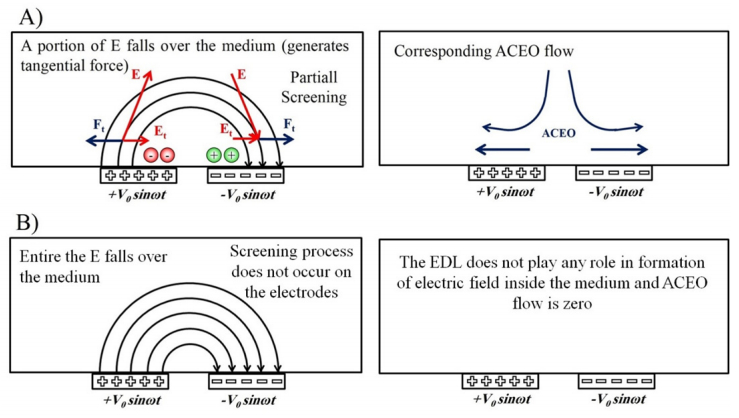
 DownLoad:
DownLoad: 